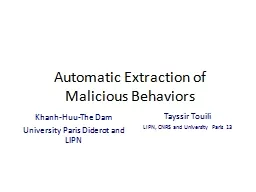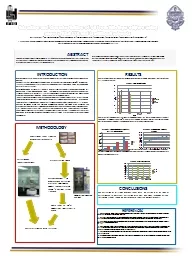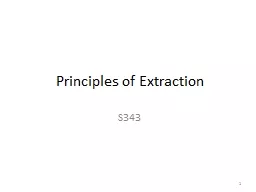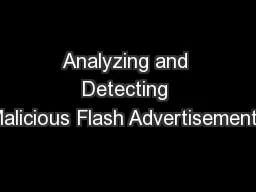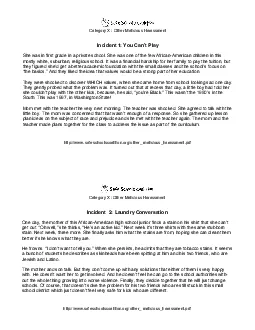PPT-Automatic Extraction of Malicious Behaviors
Author : yoshiko-marsland | Published Date : 2020-04-02
KhanhHuuThe Dam University Paris Diderot and LIPN Tayssir Touili LIPN CNRS and University Paris 13 Motivation Symantec reported 317M malwares in 2014 vs 431M malwares
Presentation Embed Code
Download Presentation
Download Presentation The PPT/PDF document " Automatic Extraction of Malicious Behav..." is the property of its rightful owner. Permission is granted to download and print the materials on this website for personal, non-commercial use only, and to display it on your personal computer provided you do not modify the materials and that you retain all copyright notices contained in the materials. By downloading content from our website, you accept the terms of this agreement.
Automatic Extraction of Malicious Behaviors: Transcript
Download Rules Of Document
" Automatic Extraction of Malicious Behaviors"The content belongs to its owner. You may download and print it for personal use, without modification, and keep all copyright notices. By downloading, you agree to these terms.
Related Documents

